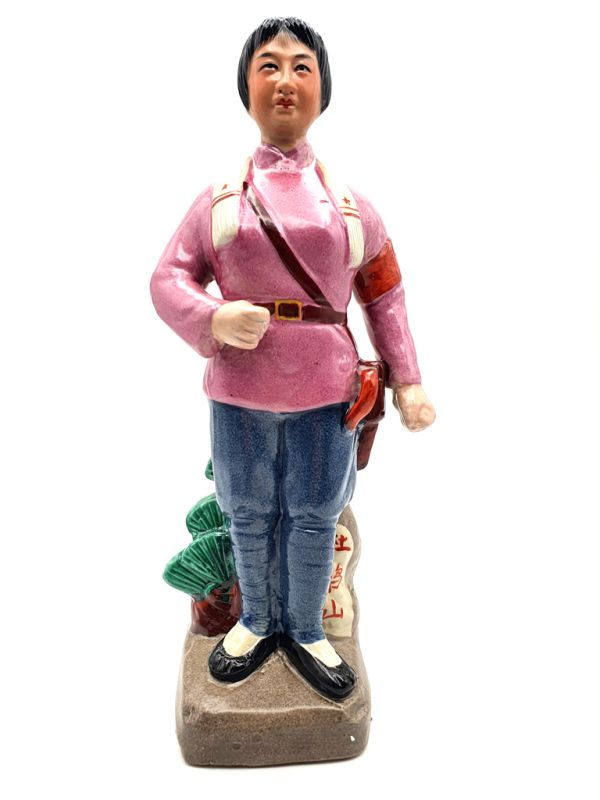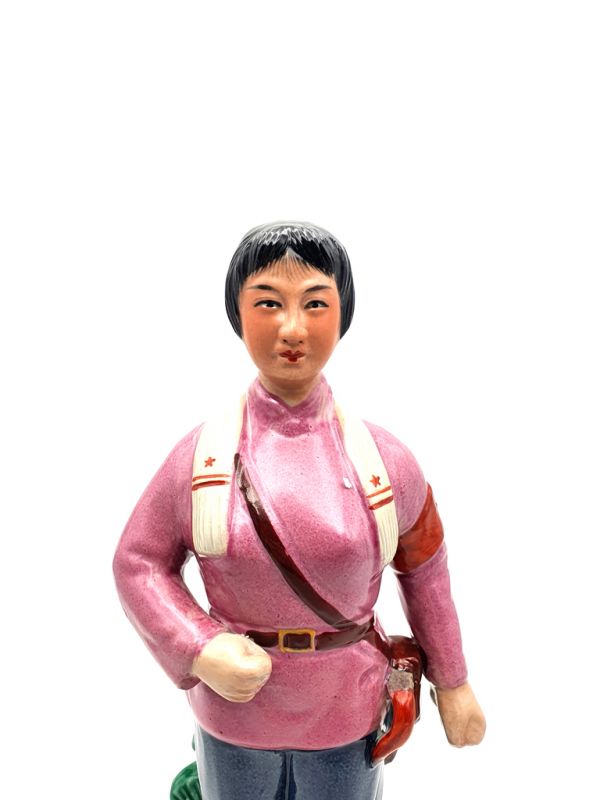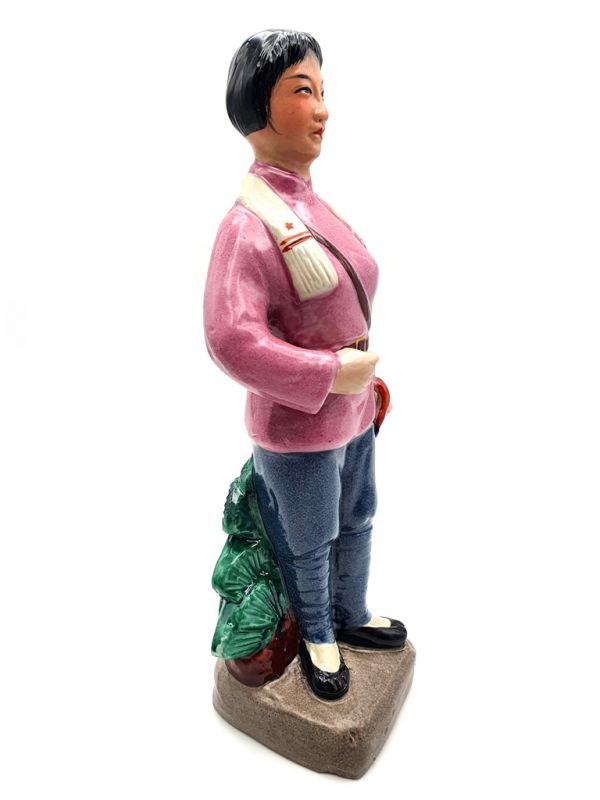Bisque Porcelain statue - Cultural Revolution - The mother
History of Chinese bisque (pottery) statues:
- This kind of statue often called "biscuit" refers to pottery that has been fired but not yet glazed.
- The porous nature of bisque earthenware means that it readily absorbs water, while vitreous ware and bone china are almost non-porous even without glazing - The temperature of bisque firing is usually at least 1200°C.
The Chinese revolution:
- The Chinese Revolution brings together the events of the Chinese Civil War (1927-1949), leading to the establishment of the regime of Mao Zedong.
- Reproduction of a Chinese porcelain statue called Chinese biscuit.
- The statue depicts some Chinese revolutionaries.















